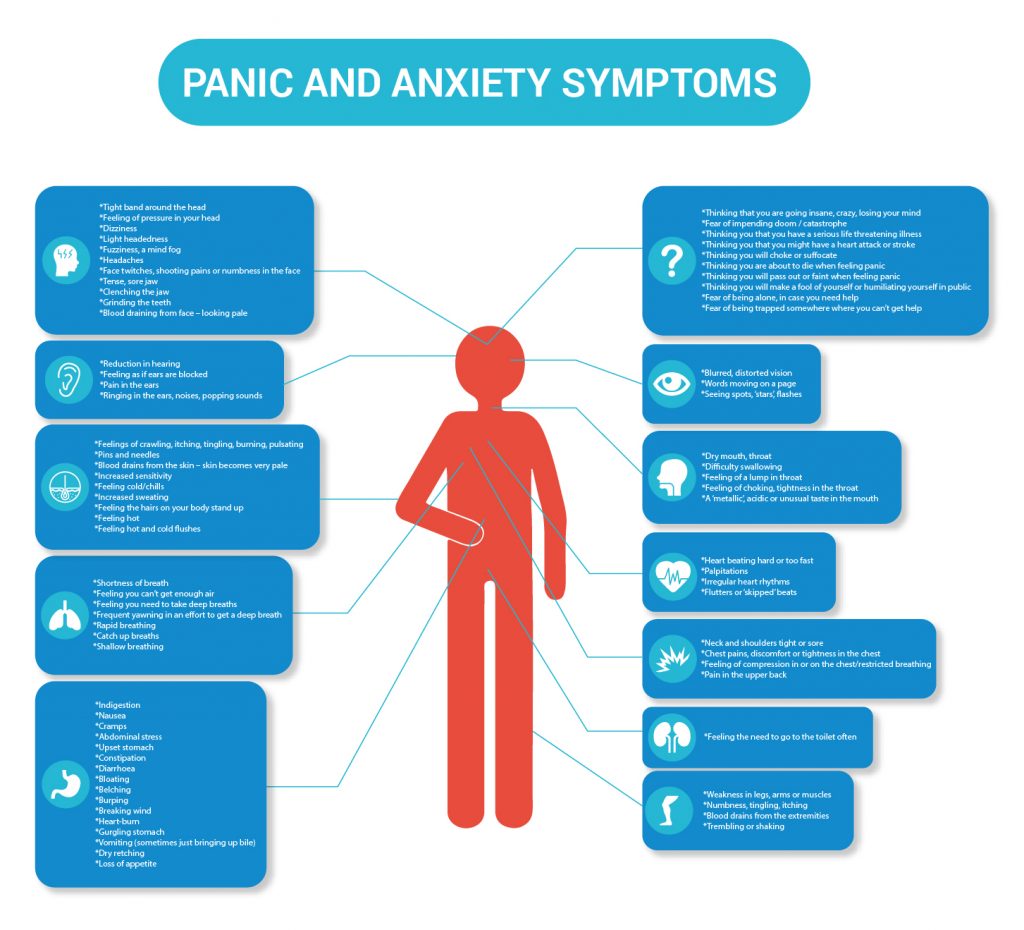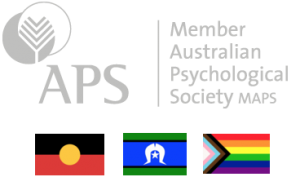Anxiety and Panic
Arousal
To begin to understand anxiety it is necessary to understand arousal. Arousal is the mechanism behind anxiety. It is a physiological and psychological state of readiness, your body is prepared to respond to potentially threatening stimuli. At lower levels of arousal, when a person is not responding to stimuli, they are relaxed and can fall asleep. At higher levels of arousal, a person can experience panic symptoms and the flight, fight and freeze response may take over. Generally as arousal increases, so too does anxiety. Increased arousal can easily tip from anxiety to anger.
Panic and Anxiety Symptoms
Please see the image below to find out more about the symptoms of panic or anxiety which can be experienced as a result of anxiety throughout many areas of the body. Not all of the symptoms are felt by everyone all of the time, and many of the symptoms below may fluctuate in intensity and some are only experienced during the throes of panic.
This is not a complete list, it only lists some of the common symptoms. Each of these symptoms can be explained psychologically, and successfully managed through psychological treatment.


